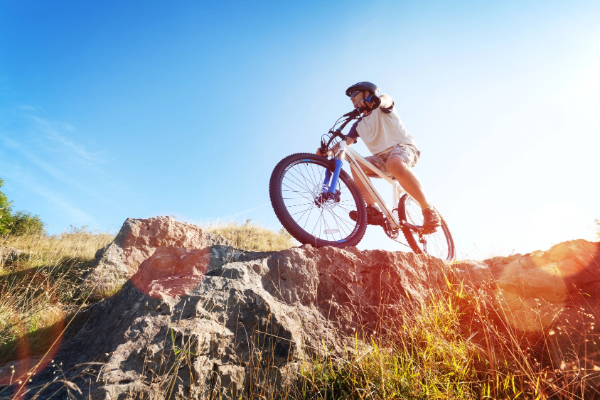Mountain biking is a thrilling and adventurous sport. However, lower back pain can be a common issue for many riders. Understanding the causes of this pain is crucial for prevention and treatment.
Biomechanics and Posture
Improper Bike Fit
An improperly fitted bike can cause lower back pain. If the bike frame is too large or small, it forces the rider into an awkward position. Adjusting the saddle height, handlebar reach, and stem length can significantly reduce strain on the back.
Incorrect Saddle Position
The saddle position plays a vital role in comfort. A saddle that is too high or low can cause excessive bending or stretching, leading to lower back pain. Ensuring the saddle is level and at the correct height for your leg length is essential.
Handlebar Position
Handlebars that are too low or far forward can force the rider to lean excessively. This position can strain the lower back muscles. Adjusting the handlebar height and reach to a more comfortable position can alleviate this strain.
Riding Technique
Poor riding technique can contribute to lower back pain. Bending excessively at the waist or hunching over the handlebars can strain the lower back muscles. Maintaining a neutral spine and engaging the core muscles can help in preventing pain.
Physical Conditioning
Weak Core Muscles
Weak core muscles can lead to lower back pain. The core muscles, including the abdominals, obliques, and lower back muscles, support the spine. Strengthening these muscles through targeted exercises can provide better support and reduce pain.
Poor Flexibility
Poor flexibility, particularly in the hamstrings and hip flexors, can cause lower back pain. Tight muscles can pull on the pelvis, altering the alignment of the spine. Regular stretching and flexibility exercises can help in maintaining proper alignment and reducing pain.
Muscle Imbalances
Muscle imbalances, where one muscle group is stronger or tighter than its opposing group, can lead to lower back pain. Balancing muscle strength through a well-rounded exercise program can prevent these imbalances.
Riding Conditions
Rough Terrain
Mountain biking often involves riding on rough and uneven terrain. The constant jarring and impact can strain the lower back muscles. Using a bike with good suspension and learning proper riding techniques can help in absorbing shocks and reducing strain.
Long Rides
Long rides can lead to fatigue and lower back pain. Prolonged periods in the same position can cause muscle stiffness and discomfort. Taking regular breaks and stretching can alleviate this issue.
Injuries and Overuse
Overuse Injuries
Overuse injuries can occur from repetitive movements and prolonged periods of biking. These injuries can cause inflammation and pain in the lower back. Proper rest and recovery, along with a balanced training program, can prevent overuse injuries.
See Also: Is Mountaineering a Sport
Acute Injuries
Acute injuries, such as falls or crashes, can lead to lower back pain. These injuries can cause muscle strains, sprains, or even fractures. Wearing protective gear and riding within your limits can help in preventing acute injuries.
Prevention and Treatment
Proper Bike Fit
Ensuring a proper bike fit is crucial. Consulting with a professional bike fitter can help in setting up your bike correctly. Adjusting the saddle height, handlebar position, and frame size to your body measurements can significantly reduce the risk of lower back pain.
Strengthening Exercises
Incorporating core strengthening exercises into your routine can provide better support for your lower back. Exercises like planks, bridges, and leg raises can help in building core strength.
Flexibility Exercises
Regular stretching and flexibility exercises can improve muscle flexibility. Stretching the hamstrings, hip flexors, and lower back muscles can help in maintaining proper alignment and reducing pain.
Proper Riding Technique
Learning and maintaining proper riding technique is essential. Keeping a neutral spine, engaging the core muscles, and avoiding excessive bending can prevent strain on the lower back.
Rest and Recovery
Allowing adequate rest and recovery is crucial in preventing overuse injuries. Listening to your body and taking breaks when needed can help in preventing lower back pain.
Professional Help
Consulting with a healthcare professional, such as a physical therapist or chiropractor, can provide personalized treatment and advice. They can help in diagnosing the cause of lower back pain and providing appropriate treatment options.
Conclusion
Lower back pain while mountain biking can be caused by various factors. Understanding these causes and taking preventive measures can help in reducing pain and improving your riding experience. Proper bike fit, physical conditioning, and riding technique are crucial in preventing lower back pain. Regular stretching, strengthening exercises, and adequate rest can also play a significant role in maintaining a healthy and pain-free lower back.

